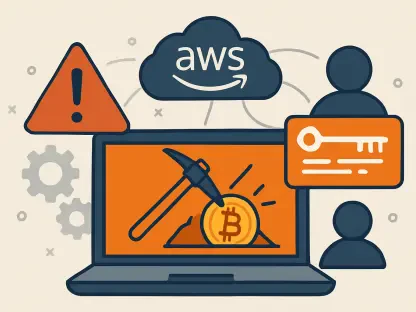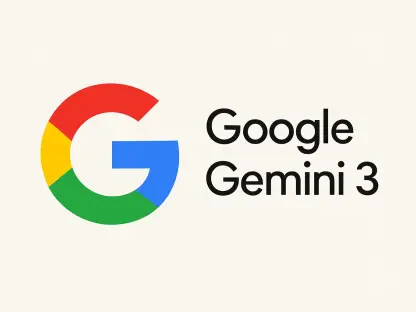In a landscape where streaming devices are becoming central to home entertainment, Amazon has made a bold decision to transition its Fire TV lineup from Android to a proprietary operating system called Vega OS, marking a significant shift in strategy. This change isn’t just a technical update; it represents a strategic pivot aimed at redefining how users interact with their devices. With the promise of faster performance, deeper AI integration, and a more personalized experience, Amazon is betting big on Vega OS to set its streaming sticks and Smart TVs apart in a crowded market. Yet, this move also raises questions about user freedom and compatibility, as the company distances itself from the flexibility that Android once provided. As this new chapter unfolds, the balance between innovation and restriction becomes a critical point of discussion for tech enthusiasts and casual users alike.
Exploring the Strategic Shift
Unveiling the Motivation Behind the Change
Amazon’s decision to develop Vega OS for Fire TV devices stems from a clear desire to craft a more controlled and optimized user environment, distinct from the broader Android ecosystem. By moving away from Google’s platform, the company gains greater autonomy over software updates, interface design, and feature implementation. This shift allows for a tailored experience that aligns closely with Amazon’s vision of seamless entertainment and smart home integration. A significant driver behind this transition is the need to stand out in a competitive streaming market where differentiation is key. Vega OS promises to deliver a lightweight system that operates efficiently even on modest hardware, requiring just 1 GB of RAM. This focus on efficiency could potentially lower production costs while enhancing device responsiveness, positioning Fire TV as a top contender for budget-conscious consumers seeking high performance.
Beyond the technical advantages, this move reflects a broader industry trend where tech giants are increasingly prioritizing proprietary systems to tighten control over user data and experience. Vega OS is built to integrate deeply with Amazon’s ecosystem, embedding advanced AI capabilities through an enhanced version of Alexa, known as Alexa+. This enables more natural interactions, such as conversational content searches or smart home commands issued directly from the TV interface. However, stepping away from Android also means stepping away from a vast developer community and app compatibility, a trade-off that could impact user satisfaction. The strategic intent is clear: to create a cohesive, branded experience that prioritizes Amazon’s services, even if it means sacrificing some of the openness that Android users have come to expect over time.
Assessing the Rollout and Market Impact
The initial launch of Vega OS with the Fire TV Stick 4K Select, priced at an accessible $40 in the United States, signals Amazon’s intent to test the waters before a wider rollout across its device lineup. Plans to expand to other models and regions like Spain in the coming months suggest confidence in the platform’s appeal. This phased approach allows for real-time feedback from early adopters, helping to refine the OS before it reaches a global audience. The pricing strategy also underscores an aim to attract a broad demographic, ensuring that cutting-edge technology remains within reach for many households. Yet, the success of this rollout hinges on whether users perceive the benefits of Vega OS as outweighing the limitations, particularly for those accustomed to Android’s versatility on Fire TV devices.
Market impact extends beyond just consumer reception; it also reshapes Amazon’s position among competitors. By forging an independent path with Vega OS, the company challenges the dominance of Android-based streaming solutions while aligning itself with other tech leaders who favor proprietary ecosystems. The integration of major streaming apps like Netflix, Prime Video, and Disney+ ensures that content availability isn’t a barrier, but the absence of niche or unofficial apps could alienate a segment of tech-savvy users. As adoption grows, industry watchers will be keen to observe whether this transition strengthens Amazon’s foothold in the streaming hardware space or if it sparks pushback from users resistant to a more curated platform. The coming years will be pivotal in determining if this gamble pays off in terms of market share and brand loyalty.
Evaluating Benefits and Challenges
Highlighting Performance and AI Innovations
One of the standout features of Vega OS is its lightweight architecture, designed to run smoothly with minimal resources, making Fire TV devices faster and more responsive compared to their Android-based predecessors. This efficiency is a game-changer for users who have experienced lag or delays on older streaming sticks, offering a fluid interface that enhances the viewing experience. Requiring just 1 GB of RAM, Vega OS proves that powerful performance doesn’t always demand high-end hardware, potentially setting a new standard for entry-level streaming devices. This focus on speed caters to a wide audience, from casual viewers to those integrating their TVs into complex smart home setups, ensuring that technology keeps pace with user expectations.
Equally impressive is the deep integration of Alexa+, Amazon’s advanced AI assistant, which transforms how users interact with Fire TV. Through natural language processing, Vega OS enables conversational commands, such as requesting personalized show recommendations based on viewing history or issuing combined instructions like playing content and adjusting smart home lighting. This level of personalization and automation creates a seamless bridge between entertainment and daily convenience, reflecting a future where devices anticipate needs rather than merely respond to them. Such innovations highlight Amazon’s ambition to position Fire TV as not just a streaming tool, but a central hub for connected living, potentially redefining user engagement in the long term.
Addressing Limitations and User Concerns
While Vega OS brings notable advancements, it also introduces significant trade-offs that could impact user satisfaction, most prominently the removal of sideloading capabilities. On Android-based Fire TV devices, sideloading allowed users to install apps from external sources, granting access to a broader range of content beyond official stores. Vega OS, by contrast, restricts users to Amazon’s curated app ecosystem, which, while inclusive of major services like YouTube and HBO Max, excludes unofficial or niche applications. This shift prioritizes security and platform stability but at the expense of user freedom, a change that may frustrate those who valued the flexibility Android offered for customization and exploration.
Another concern lies in the potential for compatibility issues as Amazon fully migrates its Fire TV lineup to Vega OS. Users with existing setups or third-party integrations may find the transition less than seamless, particularly if certain functionalities or apps fail to make the leap to the new system. While the promise of enhanced performance and AI-driven features is compelling, the loss of an open ecosystem could deter a segment of the user base, especially tech enthusiasts who thrive on tinkering with their devices. As Amazon continues to refine Vega OS, addressing these concerns through transparent communication and perhaps reintroducing some level of flexibility will be crucial to maintaining trust and satisfaction among its diverse audience.
Reflecting on a Pivotal Transition
Looking back, Amazon’s shift to Vega OS for Fire TV devices stood as a defining moment in its quest to carve out a unique space in the streaming market. The emphasis on a lightweight, efficient platform paired with cutting-edge AI integration through Alexa+ showcased a commitment to innovation that reshaped user expectations. However, the decision to limit features like sideloading highlighted the delicate balance between control and flexibility. Moving forward, the focus should be on listening to user feedback to refine Vega OS, ensuring that future updates address compatibility concerns and perhaps offer controlled avenues for customization. Exploring partnerships with developers to expand app offerings could also mitigate some of the restrictions felt by users. As the streaming landscape evolves, Amazon’s ability to adapt Vega OS based on real-world usage will determine whether this transition cements its leadership or serves as a cautionary tale of overreach in pursuit of differentiation.









